
Dirticulum: Classes
Ahh…the Dirty Classroom. No sweeping or dusting necessary. Here you’ll find our own effort at helping outdoor educators become better teachers. From the inspiration of our Staff Blog Posts and the structure of our Lesson Plans to the pure visual fun of our Videos and the detailed descriptions in our Nature Guide, we’re doing our part at making the Dirty Classroom good, clean fun.
Adventure Classes
Adventure Course

The Adventure Course is a set of classic teamwork initiatives. Talk to each other, utilize everyone’s strengths, and work like a team. A low ropes course…physically safe, but it still pushes all the right buttons.
advcourselessonplanArchery
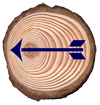
The invention of the bow and arrow played an invaluable role in the progression and growth of the human race. Students will not only learn the importance of archery, but they will also learn basic safety and shooting techniques and get to practice firsthand on our range.
archerylessonplanClimbing
 Fear. Limits. Safety. Challenge. Rewards. Relief. Memories. A million words can describe our Climbing Wall, which puts students 30 feet up into the air, powered solely by your own effort and determination. The experience is entirely safe and supportive. Afterwards students will discuss the difference between actual and perceived risk, and how it felt before, during, and after their experience.
Fear. Limits. Safety. Challenge. Rewards. Relief. Memories. A million words can describe our Climbing Wall, which puts students 30 feet up into the air, powered solely by your own effort and determination. The experience is entirely safe and supportive. Afterwards students will discuss the difference between actual and perceived risk, and how it felt before, during, and after their experience.
Native Culture
 Students learn which local plants to steep in a glass of tea, and which leaves make a natural toothbrush. As students discover how Serranos utilized the local forest for survival, they will hear Serrano legends around a campfire they helped to build with a bow drill fire set!
Students learn which local plants to steep in a glass of tea, and which leaves make a natural toothbrush. As students discover how Serranos utilized the local forest for survival, they will hear Serrano legends around a campfire they helped to build with a bow drill fire set!
Orienteering
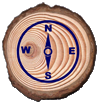 Being in the wilderness means not only knowing about the animals and plants, but knowing how to find your way around as well. Map and compass skills will be learned as students challenge themselves to complete a designated orienteering course.
Being in the wilderness means not only knowing about the animals and plants, but knowing how to find your way around as well. Map and compass skills will be learned as students challenge themselves to complete a designated orienteering course.
Environmental Classes
Earth Works
 Mountains, valleys, volcanoes, and beaches. Students become budding geologists as they study weathering, minerals, the wonders of rocks and the very dirt beneath our feet.
Mountains, valleys, volcanoes, and beaches. Students become budding geologists as they study weathering, minerals, the wonders of rocks and the very dirt beneath our feet.
Environmental Awareness
 Background Information / Lesson Plan
Background Information / Lesson Plan
Tree huggers! Earth muffins! Each and every one of us plays an important role in the long-term health and survival of our race and planet. This class will give students a clear understanding of our environment, the challenges we face, and what we can do about it. Conservation is cool…
Objectives:
- Students will be able to:
- Identify a diversity of renewable and nonrenewable resources.
- Identify the natural origins of common objects
Determine energy sources. - Summarize the interrelationship between natural resources and our communities.
- Give examples of environmentally responsible choices related to conservation and natural resource utilization
Feathered Friends
 Background Information / Lesson Plan
Background Information / Lesson Plan
If only we could all jump into the air and soar off like our birds, our feathered friends. In this class students will open their eyes in wonder as they explore the natural world of birds. They will investigate first hand the homes and habitats of small birds, hawks, eagles, and owls native to the San Bernardino Mountains.
Objectives:
Students will be able to:
- List biotic and abiotic factors that birds need in order to survive.
- Identify a diversity of local birds and their adaptations.
- Describe the interdependence birds have within an ecosystem.
- Summarize the interrelationship between birds and our communities.
- Give examples of environmentally responsible choices related to birds.
Furry Friends
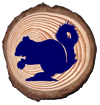 Background Information / Lesson Plan
Background Information / Lesson Plan
One of the most unique characteristics of mammals is fur. Students will explore a diversity of mammals through exploration and active, experiential games. They will learn about the food chain and food web, how to spot the home of an animal, and the relationship mammals have with the rest of the forest community.
Objectives:
Students will be able to:
- List biotic and abiotic factors that mammals need in order to survive.
- Identify a diversity of local mammals and their adaptations.
- Describe the interdependence mammals have within an ecosystem.
- Summarize the interrelationship between mammals and our communities.
- Give examples of environmentally responsible choices related to mammals.
Little World
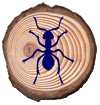 Background Information / Lesson Plan
Background Information / Lesson Plan
When was the last time you actually sought out those little creatures all around us? We generally spend much of our time trying to scoot these creepy crawly things away. But insects, arachnids, and decomposers like fungi and bacteria serve a valuable purpose in the world. This class will allow students the opportunity to learn about the little world of insects and other decomposers. They will search everywhere to see firsthand what these little creatures look like and what they actually do with all of their time.
Objectives:
Students will be able to:
- Define the niche of decomposers within an ecosystem.
- List four types of decomposers.
- Describe adaptations of common decomposers.
- Give examples of environmentally responsible choices related to decomposers.
Outdoor Survival Hike
 Background Information / Lesson Plan
Background Information / Lesson Plan
You’re on a beautiful hike and the unexpected happens. Are you prepared? Though we can never predict what will happen when we venture off into the wilderness on a hike, we can learn skills that will help us cope if anything ever does happen. The focus of this class is on wilderness survival, but the skills are universal and can be tied to surviving a natural disaster such as an earthquake. Class begins with a comprehensive look at minimum impact hiking, how to hike, and what to carry while hiking.
Objectives:
Students will be able to:
- List ways to prepare for a hike and avoid survival situations.
- Give examples of environmentally responsible choices related to hiking.
- Identify a survival situation that could happen while hiking in the wilderness, at home, or both.
- Develop and demonstrate methods for sustaining basic human needs.
Plant Detectives
 Background Information / Lesson Plan
Background Information / Lesson Plan
Students will explore the fascinating world of plants and trees while learning about photosynthesis in a whole new way. The forest offers many opportunities to learn about the diversity and significance of plants and trees. Students will understand how important producers are to the earth and that through various connections; we are all dependent on plants to live.
Objectives:
Students will be able to:
- List biotic and abiotic factors producers need in order to survive.
- Identify a diversity of local producers and their adaptations.
- Describe the interdependence producers have within their ecosystem.
- Summarize the interrelationship between producers and our communities.
- Give examples of environmentally friendly choices related to producers.
Summits
 Background Information / Lesson Plan
Background Information / Lesson Plan
A stay at camp would not be complete without a visit from the Lorax. This “wrap-up” class encourages responsible choices students can incorporate into their own lives. It’s also an opportunity for campers to review the good times, new friends, and memories they have from High Trails!
Objectives:
Students will be able to:
- Evaluate their week and make connections between High Trails and home.
- Debrief the week with their group.
- Take a final look at how their choices can affect the planet.
Team Discovery Hike
 Background Information / Lesson Plan
Background Information / Lesson Plan
Designed to acclimate students to their new environment. Through carefully planned activities, students will discover each other, their environment, and the importance of working as a team throughout the week. An excellent way to begin the camp experience, the Team Discovery Hike sets the foundation for a week of community, trust, nature, and exploration.
Objectives:
Students will be able to:
- Establish a curiosity for discovery of self, group, environment, and surroundings.
- Discover their new surroundings by locating camp on a California map and learning about local history.
- Discover their new outdoor environment through planned sensory and natural history activities.
- Discover their new field group through Name Games, Ice-Breakers, and Team Initiatives.
Water Wonders
 Background Information / Lesson Plan
Background Information / Lesson Plan
Water is the major ingredient of not only our bodies, but the earth as well. Every living thing in the world depends on it to survive. Discovering what lives in it as well as on it and around it, students will develop a practical understanding of water’s importance to a healthy and well-balanced world.
Objectives:
Students will be able to:
- Explain the water cycle and its components.
- Identify origins of water for Southern California.
- Describe different types of pollution affecting the water supply.
- Give examples of environmentally responsible choices related water.
Evening Classes
Astronomy
 Background Information / Lesson Plan
Background Information / Lesson Plan
Always fascinating, always perplexing, and truly overwhelming, the night sky offers endless discoveries to those wanting to learn and explore. Students will discover the evening sky by gazing through our telescope and learn more about the systems that organize our solar system and beyond!
Objectives:
Students will be able to:
- Identify a diversity of stars, planets, constellations, and asterisms.
- Describe the relationship between our planet and the solar system.
Line Dancing
 Background Information / Lesson Plan
Background Information / Lesson Plan
After a busy day in the field learning science classes, students get the chance to cut loose and dance! Whether you’ve brought your cowboy hat or not, the music will start you moving and the rhythm will carry you away.
Objectives:
Students will be able to:
- Learn three simple and easy dances in a safe environment.
- View adults (their instructors and teachers) taking a risk and being silly.
Nocturnal Nation
 Background Information / Lesson Plan
Background Information / Lesson Plan
While we turn on lights and go to sleep, animals use special powers to keep on keeping on all through the dark hours. Students will learn about the adaptations of these nighttime creatures and compare them to the senses we possess as humans. To finish off the presentation, students explore the nighttime environment hands on. Utilizing the knowledge learned during the indoor class, they will explore the nocturnal world in search of owls and other nighttime creatures. This is a chance for your students to understand, appreciate, and feel comfortable in an environment that we traditionally shy away from.
Objectives:
Students will be able to:
- Identify local nocturnal animals and their adaptations.
- Describe the relationships nocturnal animals have with the ecosystem.
- Give examples of environmentally responsible choices related to nocturnal animals.
Snakes
 Background Information / Lesson Plan
Background Information / Lesson Plan
It’s hard to imagine living with no hands and no legs until you really get to know the snake and the wonderful adaptations they have developed. Students will get the chance to learn about, and handle in person, several different friendly and live snake specimens.
Objectives:
Students will be able to:
- Describe snake adaptations.
- Summarize the interdependence between snakes and other organisms in the ecosystem.
- List the major parts of snakes.
- Demonstrate the proper techniques for touching snakes.
Villages
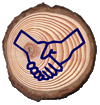 Background Information / Lesson Plan
Background Information / Lesson Plan
Villages is a time where group bonding and sharing is paramount. It is a safe environment for students to open up to a group and learn about each other. Villages is facilitated in a way that ensures that everyone is within their comfort zone and able to participate in anyway that suits them. Four guidelines for Villages include (1) right to pass, (2) appropriate conversation topics, (3) no gossiping, (4) what happens in Villages stays in Villagees!
Objectives:
Students will be able to:
- Be more accepting of their peers.
- Identify commonalities of people in their group.
- Form new positive social relationships.
Nature Guide
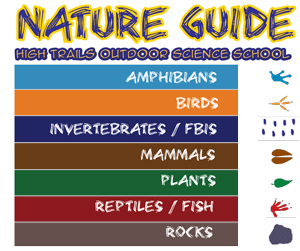 Largely put together by staff member Laura Cerrato, here’s an old fashioned, printable field guide full of all the animals, plants, rocks and things you might find in our neck of the woods.
Largely put together by staff member Laura Cerrato, here’s an old fashioned, printable field guide full of all the animals, plants, rocks and things you might find in our neck of the woods.
